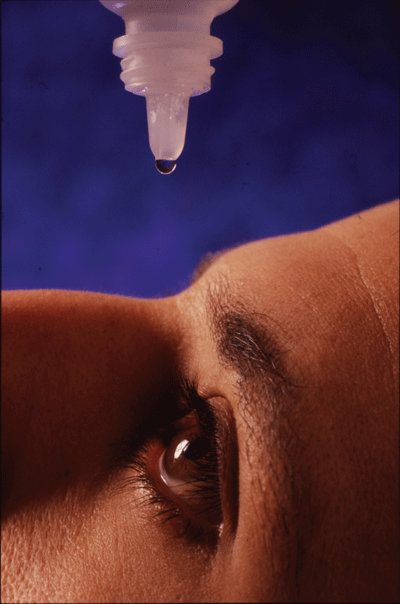About one in 12 preservative-free eye drop bottles could be significantly contaminated, according to a study in Februarys British Journal of Ophthalmology.
Researchers at the Tennent Institute of Ophthalmology in Glasgow, United Kingdom, found that preservative-free eye drops in multiple-application containers are at risk of microbial contamination.
 |
| Patients who touch their eye to the pipette top may contaminate the bottle. |
The eye drops were inoculated onto different culture plates. Standard microbial identification techniques were used to identify microbial growth.
The researchers found significant bacterial growth in about 8% of the bottles. Contamination did not occur in any of the 53 antibiotic drops, but the overall contamination incidence was 19% for the non-antibiotic bottles. Staphylococcus aureus was the most common of the seven different types of organisms found.
The purpose of preservatives is to prevent microbial contamination, so a lack of preservatives is a likely cause of contamination, says Mamun Rahman, MBChB, lead researcher of the study. However, some patients are allergic to preservatives and can use only preservative-free drops, which puts them at higher risk.
The design of the bottles also exacerbates the risk of contamination, Dr. Rahman says.
The bottles are designed with a pipette open top, so the contents of the bottles become exposed every time the drops are dispensed, Dr. Rahman says. Elderly patients sometimes knock over the bottles or touch their eyes with the pipette top, which directly contaminates the bottles.
To prevent contamination, Dr. Rahman recommends taking the following steps:
Minimize the length of time the bottles are used.
Stress the importance of hygiene.
Provide clear dispensing instructions to patients.
Ultimately, the dispensing bottles need to be redesigned, Dr. Rahman says.
Rahman MQ, Tejwani D, Wilson JA, et al. Microbial contamination of preservative-free eye drops in multiple application containers. Br J Ophthalmol 2006 Feb;90(2):139-41.

